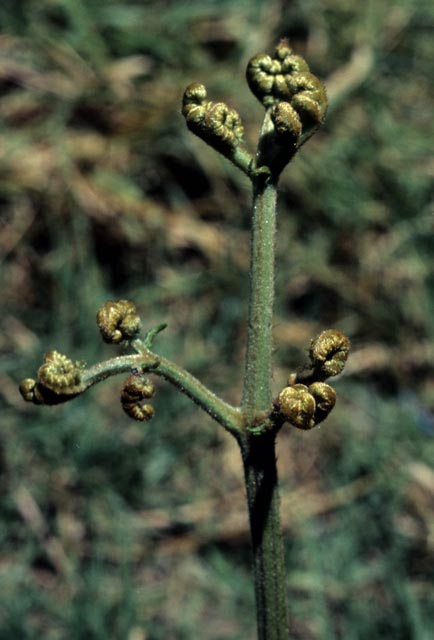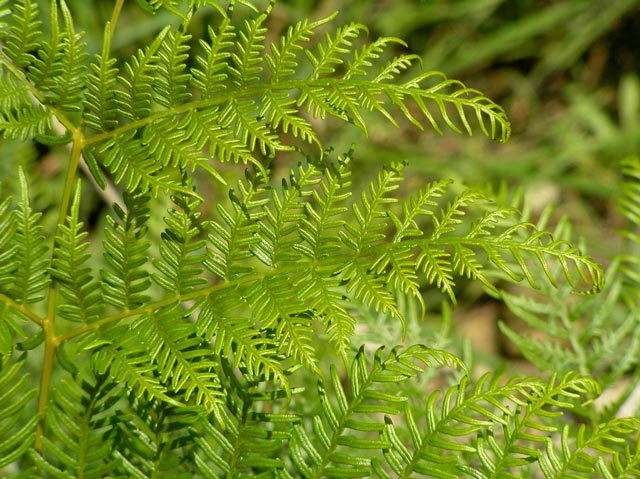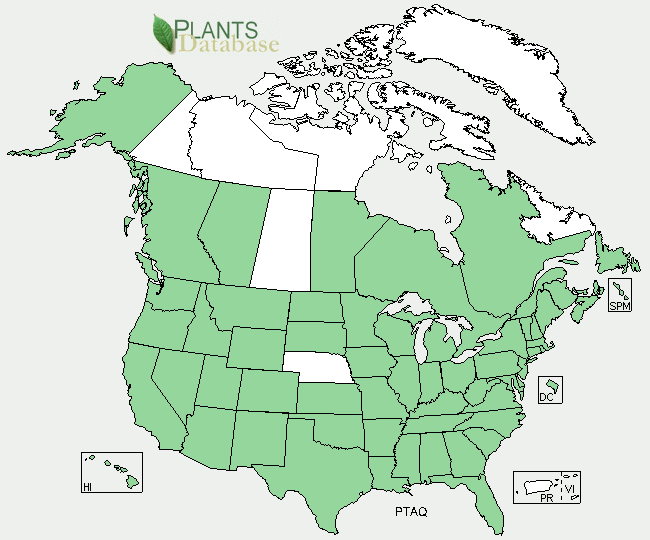

Adaptation
Bracken ferns are well adapted to fire. The rhizome is one of the most important parts of the plant and it remains underground. Due to this adaptation Bracken ferns are one the first plants to arise after a forest fire. Bracken ferns actually promote fire since they leave a layer of dried fronds on the ground. This is perfect kindling for a fire. After a fire the Bracken ferns competition has been eliminated and its spores, which often journey by wind, are able to distribute far distances. This enables Bracken fern to take over a new area and become dominate there. Most people think this is how Bracken fern got to Wisconsin. This is why burning alone cannot be a solution to Bracken fern.
Bracken ferns are also well adapted to soil changes. The map below shows the distribution of Bracken fern in North America. This encompasses many habitats and Bracken fern lives successfully in all of them due to their ability to adapt to the soil change.
Bracken ferns spread so quickly because they are
poisonous to other plants. Scientists in
Taiwan researched the the Bracken fern's interactions with other
plants. The experiment was to see if Bracken fern caused harm to
other plant's growth. They found that the it was toxic to other
plants. They conducted their research by collecting multiple parts
of the bracken fern and then oven drying them. Then they were put in
water and homogenized it. Other plants were grown and then they
measured if the bracken fern affected them. They found that the
Bracken fern altered the cell cycles in the plants and altered
mitosis. This explains why the Bracken fern is dominant over other
plants.

